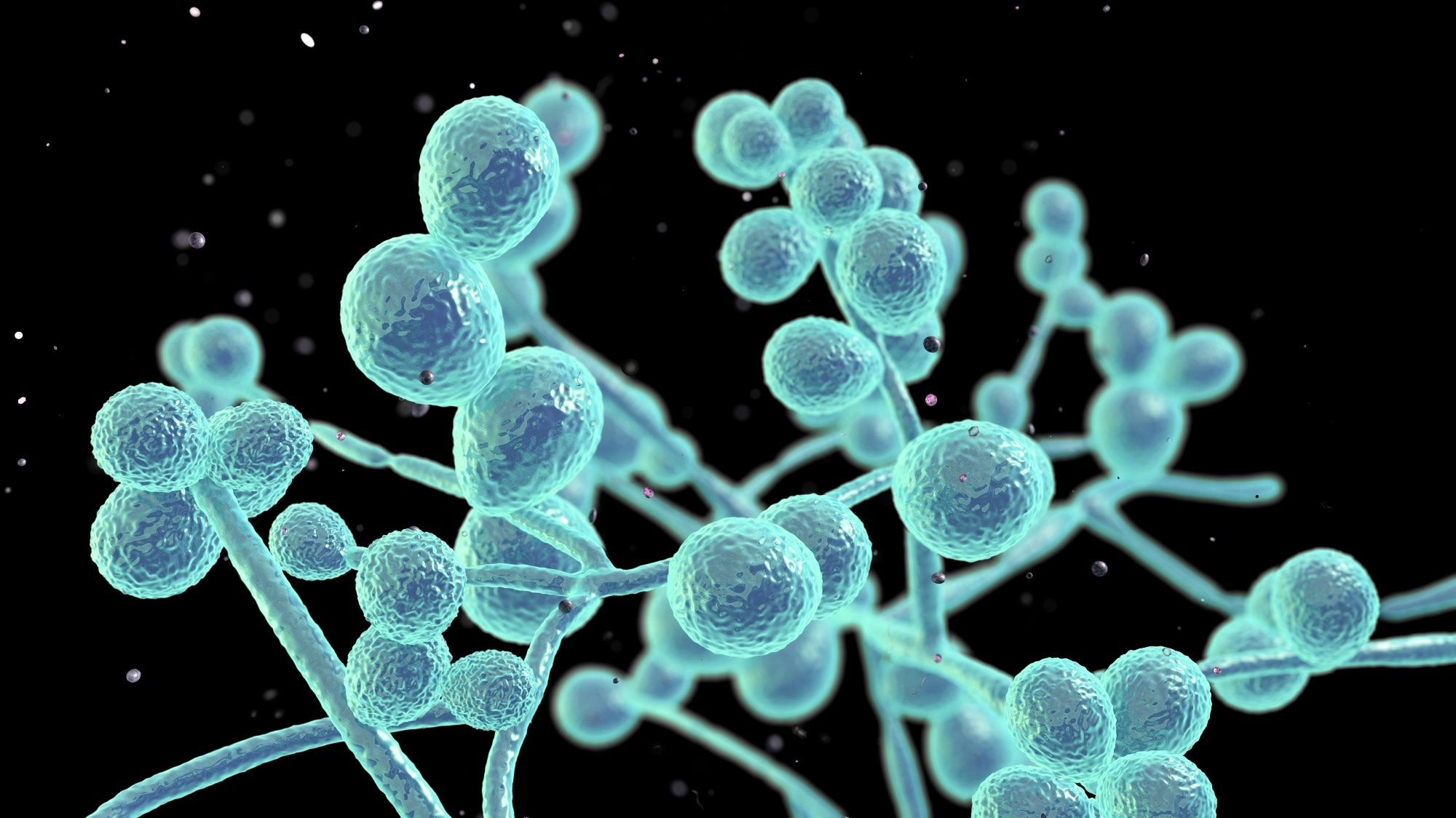In a recent study published in Microorganisms, researchers discuss current evidence on Candida auris, an emerging multidrug-resistant yeast.
Study: Candida auris Outbreaks: Current Status and Future Perspectives. Image Credit: Kateryna Kon / Shutterstock.com
What is C. auris?
On October 25, 2022, the World Health Organization (WHO) published a list of nineteen priority fungal pathogens that pose significant clinical threats to global citizens.
C. auris, a multi-drug resistant Candida species, has been classified as a critical priority fungus. Currently, several multidrug-resistant C. auris strains have been identified throughout the world, thus emphasizing the urgent need for new and effective preventive and therapeutic agents to protect the global population against this pathogen.
C. auris belongs to the Metschnikowiaceae family of the order Saccharomycetales and was first isolated from the ear canal of a 70-year-old Japanese patient hospitalized in 2009. Between 2004 and 2015, a total of 15,271 Candida isolates were collected, four of which were identified as C. auris.
Many hospitals in India, South Africa, and European countries have experienced C. auris outbreaks. C. auris infection has been associated with high mortality rates, particularly among immunocompromised patients.
It remains difficult to diagnose C. auris infection due to the absence of specific characteristic features of this fungal pathogen. Unlike other Candida species, C. auris does not colonize the gastrointestinal tract or mucosal surfaces.
Rather, C. auris has an affinity for the skin, where it can persist for prolonged periods. In some rare cases, C. auris has been found in the blood, catheter tips, and intra-abdominal infections.
Origin and evolution of C. auris
Since C. auris cases have increased globally, it has been crucial to understand whether this fungal species originated from a single location and then spread globally, or originated independently in different countries. Epidemiological analysis, in combination with single nucleotide polymorphism (SNP) analysis and whole genome sequencing (WGS), suggests that genetically distinct clonal populations of C. auris emerged independently and simultaneously in different geographical areas.
Multiple distinct clades of C. auris have been identified that differ from each other by tens to hundreds of thousands of SNPs. Each clade presents unique and distinct microbiological and clinical characteristics. Clades I, III, and IV are mostly linked with invasive infections and nosocomial outbreaks.
Additional research is needed to understand the recent virulence of C. auris. Previous studies have indicated that the virulence of a species is dependent on multiple pathogenicity determinants that should emerge globally at the same time.
Climate change, particularly warmer climates, may have aided in the transmission of C. auris. This hypothesis indicates considerable halotolerance and thermotolerance of this fungus may have originated from a non-pathogenic strain found in high-salinity regions. Due to evolutionary adaptation, this strain could overcome the mammalian thermal barrier and cause infection.
Diagnosis
Candida infection can be asymptomatic, superficial, or invasive. C. auris infection is transmitted through contact, such as skin-to-skin contact with an infected individual.
Typically, C. auris infection is identified through biochemical analysis; however, this method has proven to be difficult and unreliable. More specifically, it is difficult to accurately detect C. auris due to its phenotypic similarities with other species, such as C. duobushaemulonii, C. haemulonii, C. famata, and C. lusitaniae. Current commercially available biochemical tests cannot detect all C. auris strains.
Alternatively, molecular methods, such as real-time polymerase chain reaction (PCR) loop-mediated isothermal amplification (LAMP), and matrix-assisted laser desorption/ionization time-of-flight (MALDI-TOF) mass spectrometry are used to diagnose C. auris.
Treatment of C. auris infection
To date, an effective treatment for C. auris infection is not available, which is largely due to the absence of a molecular target. Different C. auris strains exhibit varied degrees of resistance to antifungal agents including azoles, amphotericin B, and echinocandins.
According to current recommendations, echinocandin monotherapy is the first line of treatment, prior to the results of susceptibility testing for invasive candidiasis and candidemia. Both adults and children can be treated with caspofungin and micafungin, while anidulafungin is only recommended for adults.
Patients unresponsive to first and second line treatments are subsequently treated with liposomal amphotericin B. Recently, a combination treatment including azoles with echinocandins, caspofungin with posaconazole, or polyenes with 5-flucytosine have been shown to be effective against pan-resistant strains of C. auris.
Although Clade II exhibits the highest sensitivity to fluconazole, isolates of Clade I from India, United Kingdom, and Pakistan have exhibited the greatest resistance to fluconazole, followed by amphotericin B. Clades IV and III exhibit resistance to echinocandins.
The antifungal resistance of C. auris is a significant public health concern. Mechanistically, this resistance is associated with the alteration of drug targets, activation of cellular stress response pathways, and increased efflux pump activity. Mutations in ETS-related gene 2 (ERG2), ERG3, ERG6, ERG11, and FKS1 genes also contribute to antifungal resistance of C. auris.
Journal reference:
- De Gaetano, S., Midiri, A., Mancuso, G., et al. (2024) Candida auris Outbreaks: Current Status and Future Perspectives. Microorganisms 12(5); 927. doi:10.3390/microorganisms12050927
